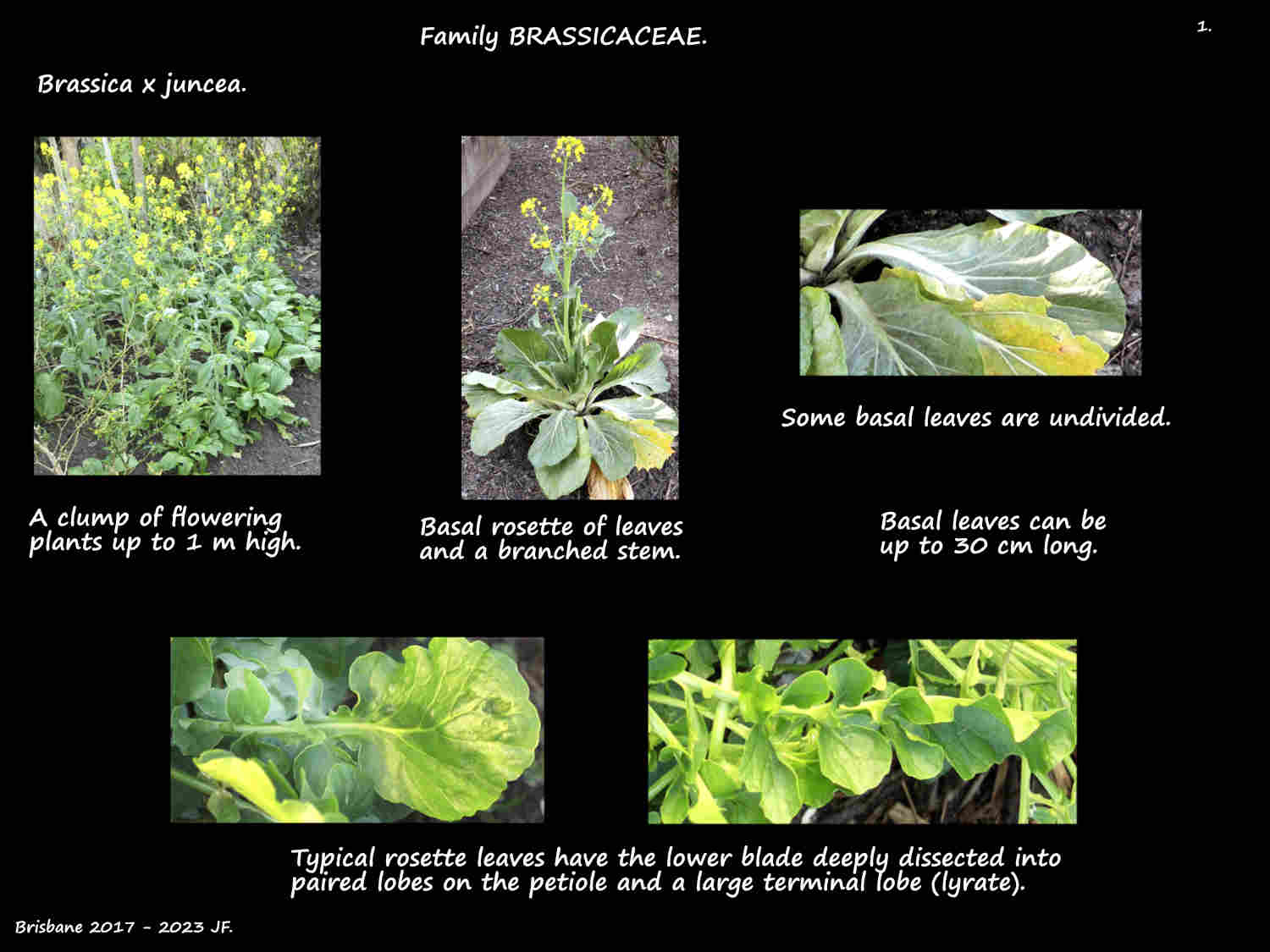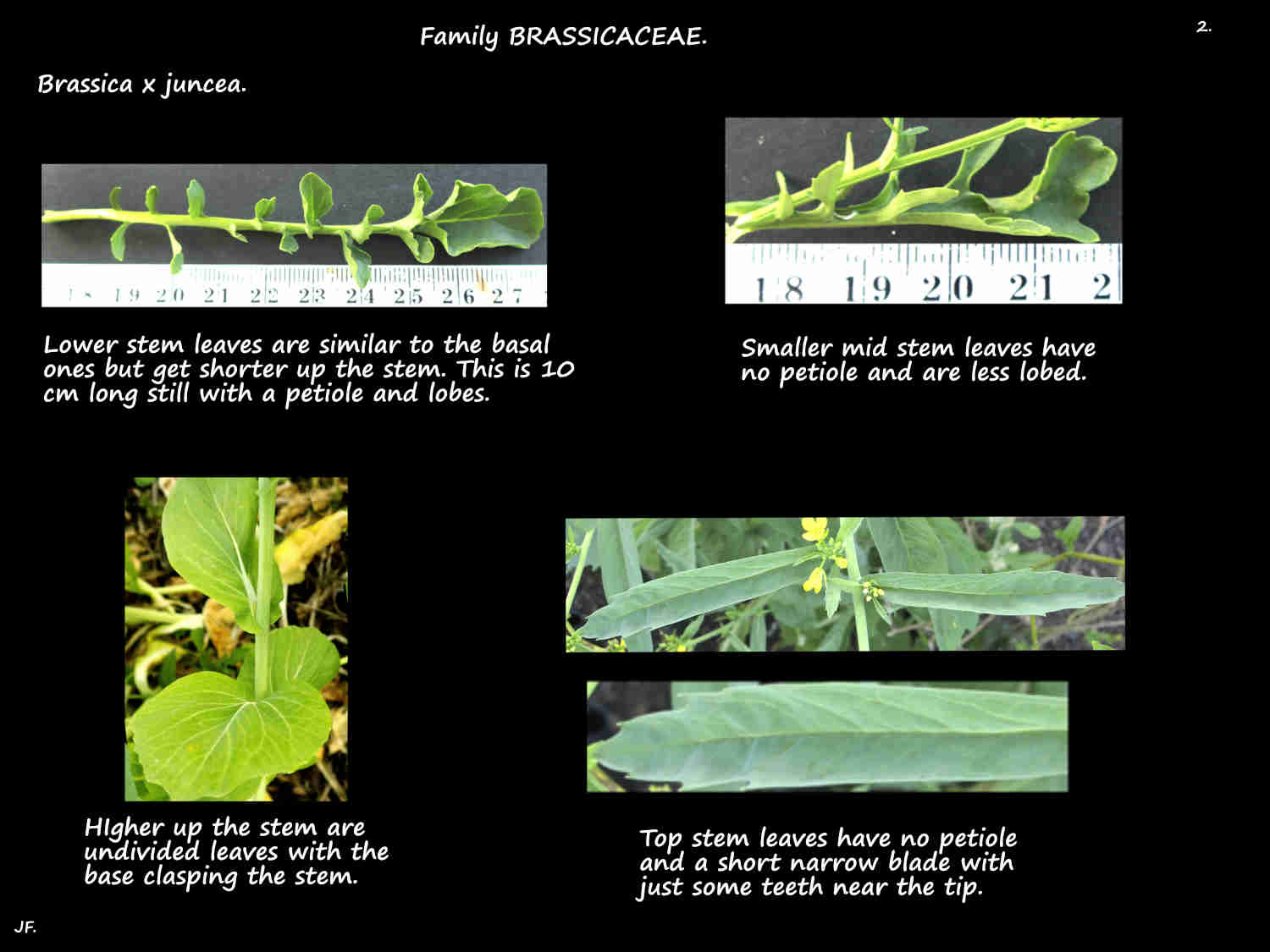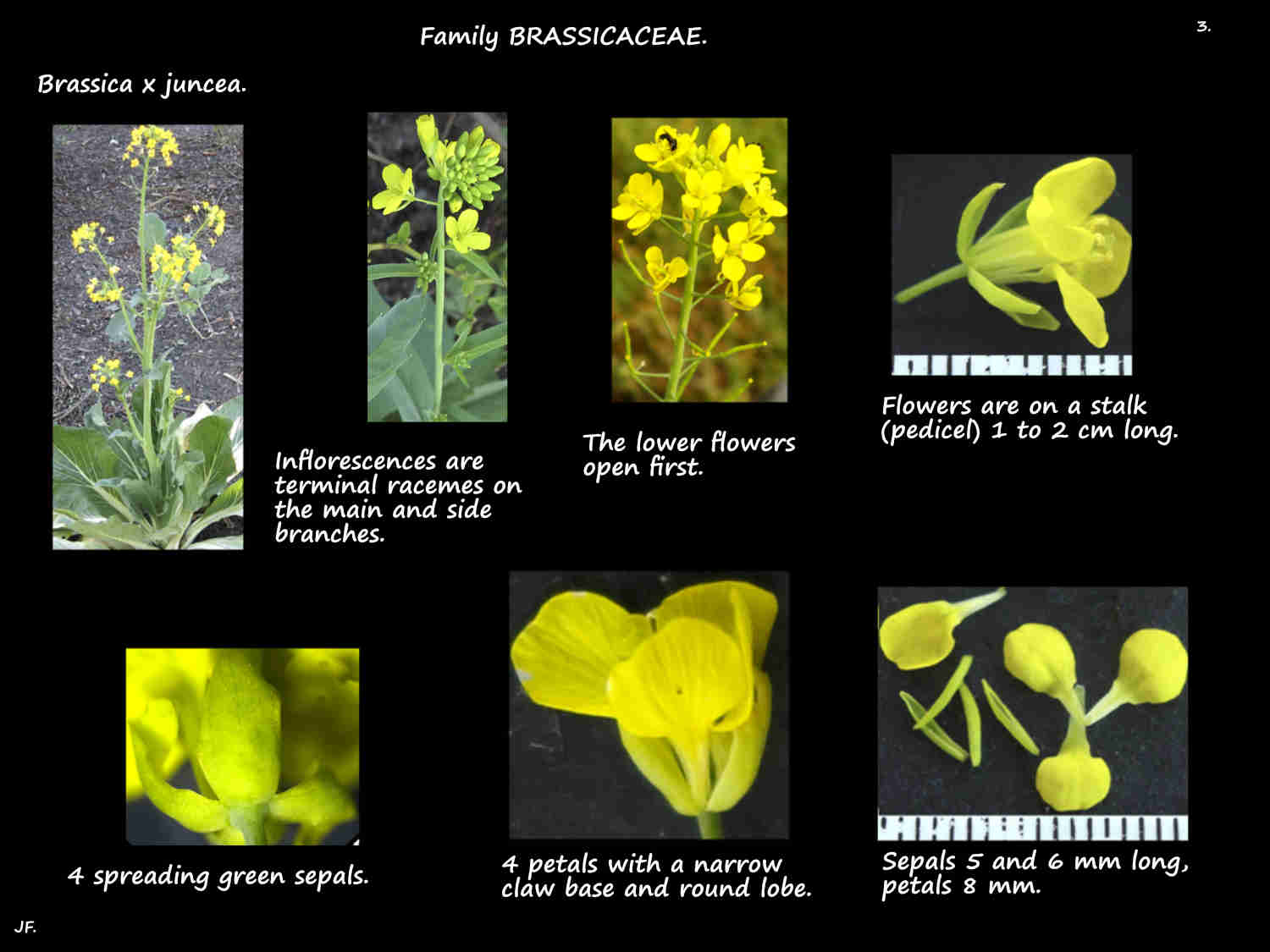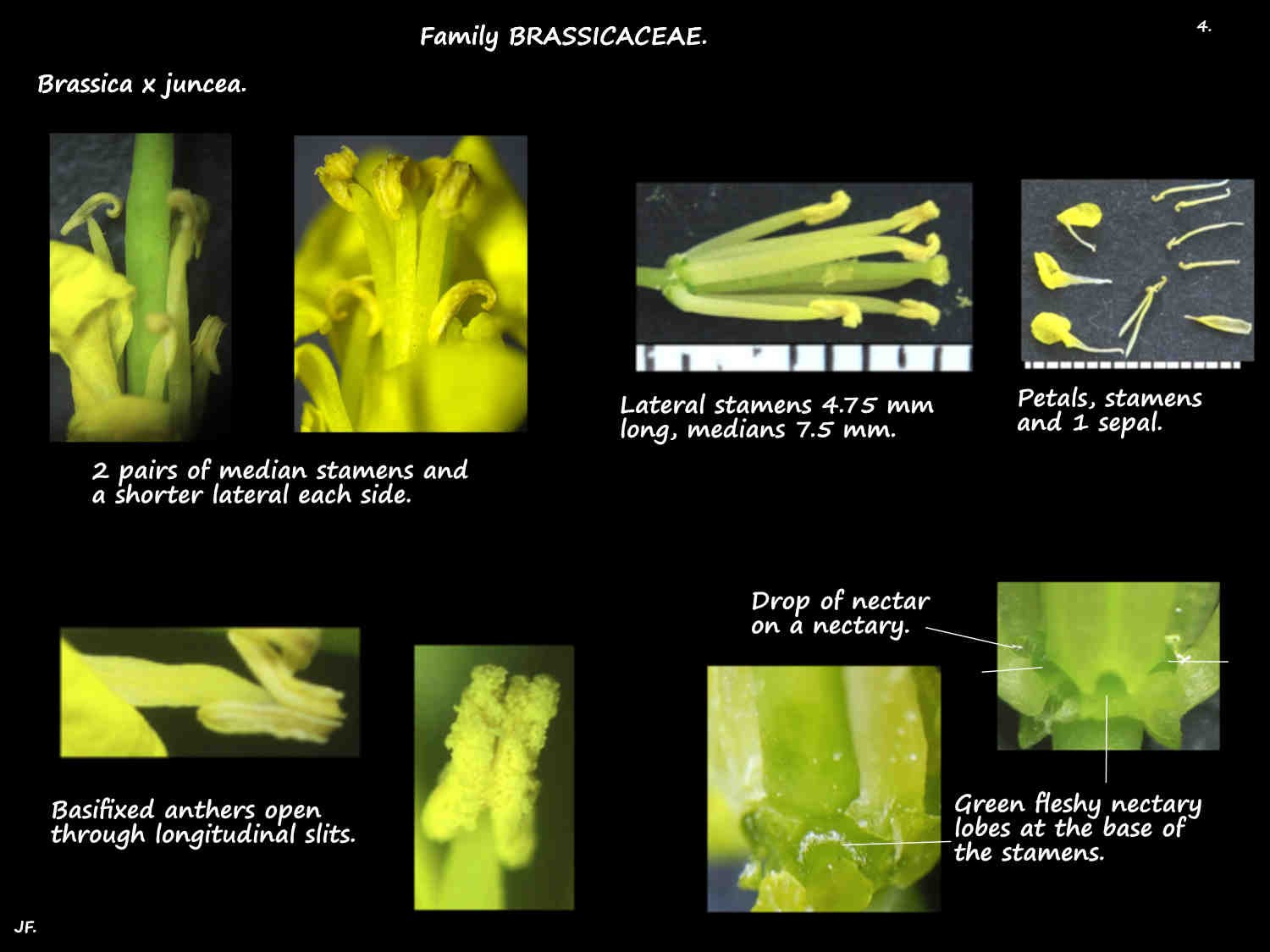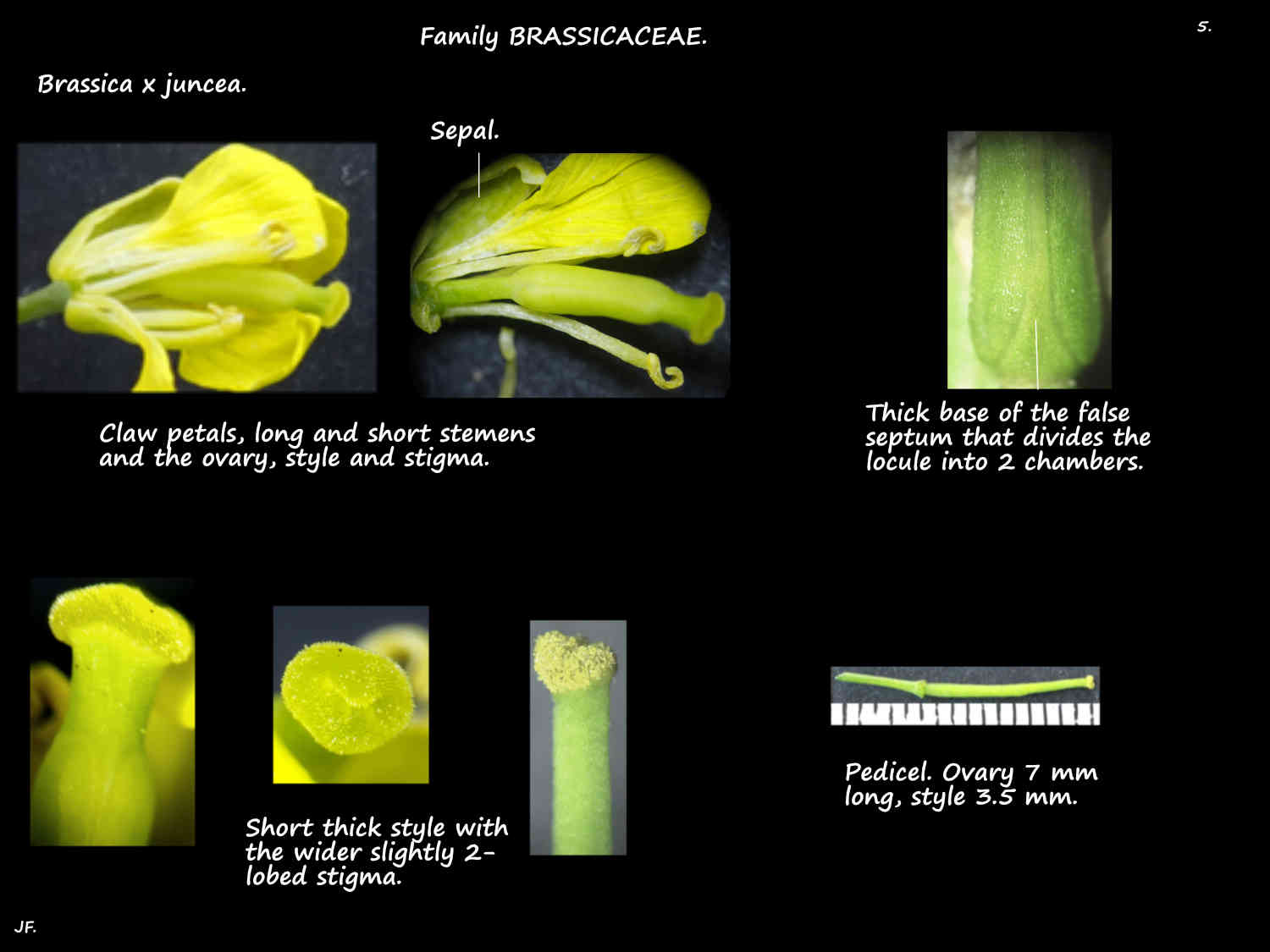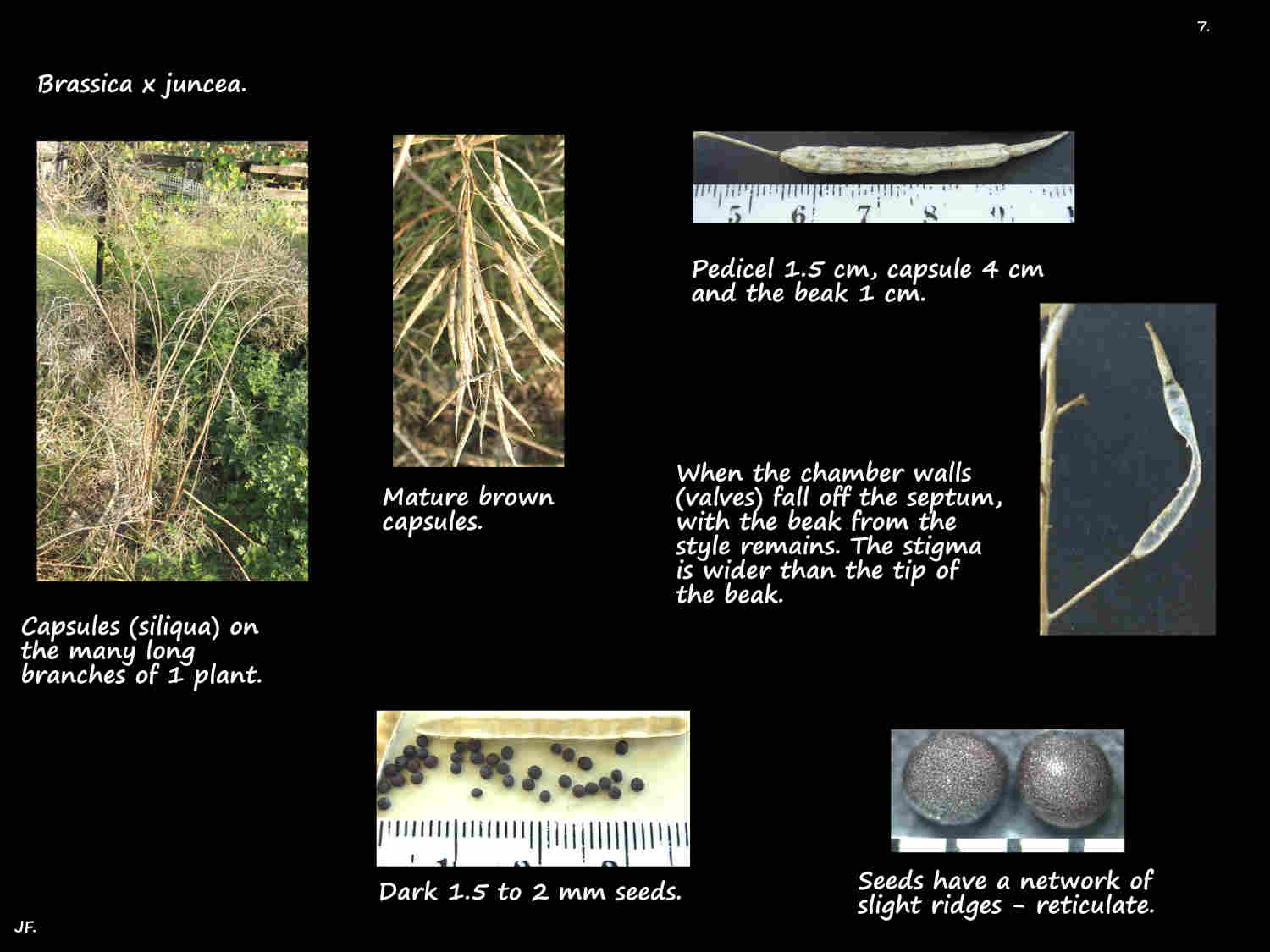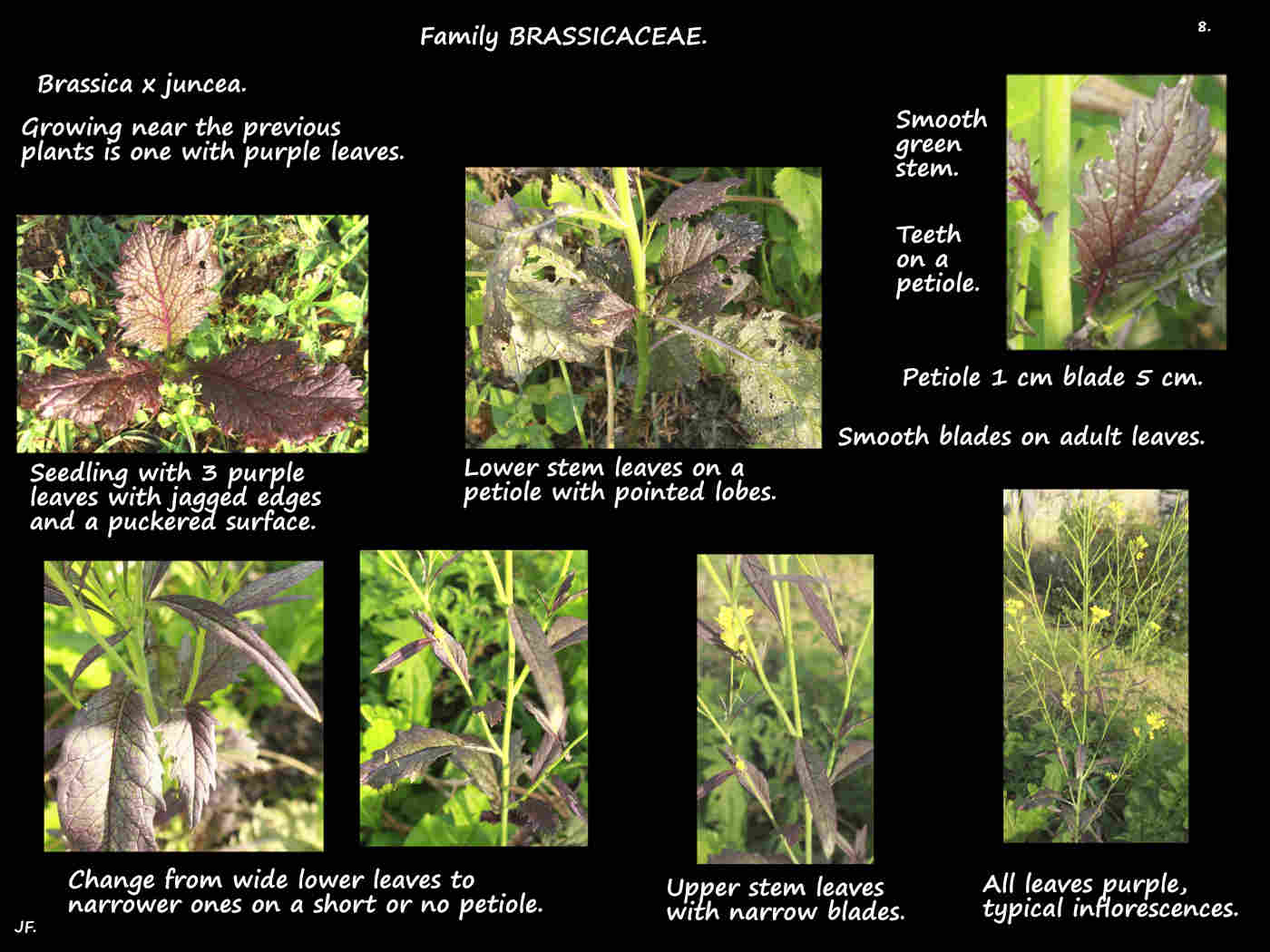Brassica x juncea.
There are a number of mustard species in Brassica and other genera.
Indian or Brown mustard, Brassica x juncea (B. juncea) is the one naturalised in S. E. Queensland where it is a weed.
Plants of the World Online recognises 67 synonyms.
They are erect annual herbs up to around 1 m high that branch in the upper half.
Young green stems may have a few hairs.
Plants form a basal rosette of leaves around 25 cm long and half as wide.
The deeply divided leaves are on a petiole up to 8 cm long.
Typically the terminal lobe is the largest and there are a few pairs of small lateral lobes on the petiole (lyrate).
There may be a waxy bloom and a few short stiff hairs.
Leaves along the stem (cauline) are alternately arranged in a spiral.
The lower leaves, on a petiole are similar to the basal ones.
Higher up the stem the petioles get shorter and the blades less lobed.
Upper leaves have no, or a very short petiole and a narrow undivided blade.
Leaves can be reddish or purple as well as green and smooth or puckered.
The edges can be smooth or toothed.
Terminal inflorescences are a raceme with spirally arranged flowers on stalks (pedicels) 1 to 2 cm long.
The lower flowers open first and the raceme continues to lengthen as new ones open at the top.
The typical Brassica flowers have 4 free sepals alternating with 4 free petals.
The spreading green sepals are up to around 6 mm long.
The pale yellow petals have a narrow claw base and rounded lobe.
They can be 1 cm or more in length.
There are 6 stamens with 2 laterals and 2 pairs of longer median ones that can be nearly 1 cm long.
The superior ovary, of 2 fused carpels has 1 locule but it is divided into 2 by a false septum.
The apical style holds a spherical or slightly bi-lobed stigma.
Their fruit is a capsule (siliqua) that splits at the septum into 2 valves.
Each of the 2 chambers has a single row of seeds.
Capsules are 5 to 6 cm long and around 4 mm wide.
The style remains as a beak up to 1 cm long with a slightly wider stigma.
The up to around 15 almost spherical seeds are 2 mm wide.
Reddish-brown to yellow the seeds have an irregular surface.
There are many cultivars including B. juncea subsp. juncea.
This, and forms of B. napus and B. rapa are all used to produce canola oil.
B. napus and B. rapa are naturalised in some areas west of Brisbane.
J.F.

